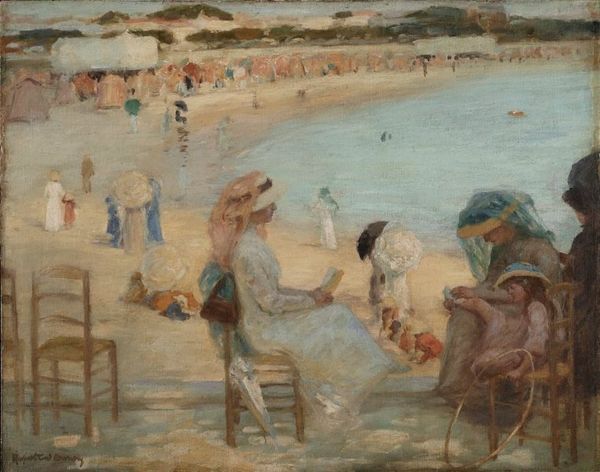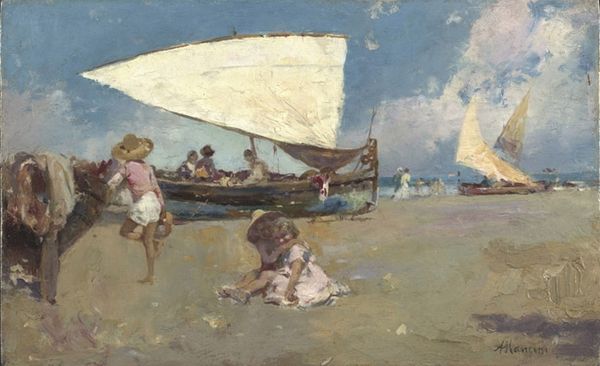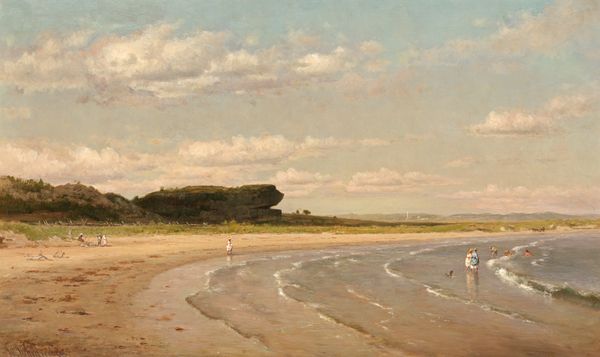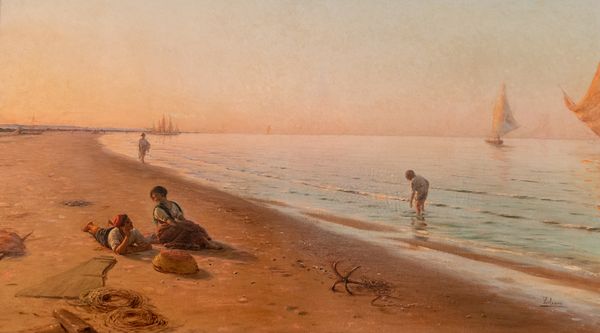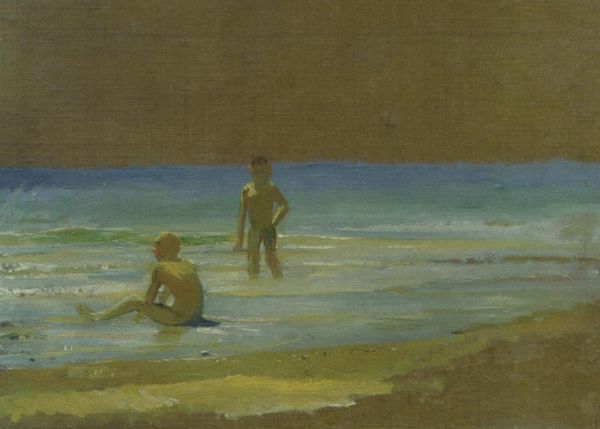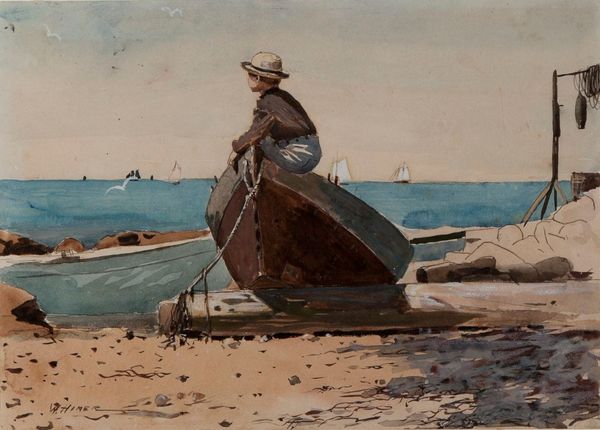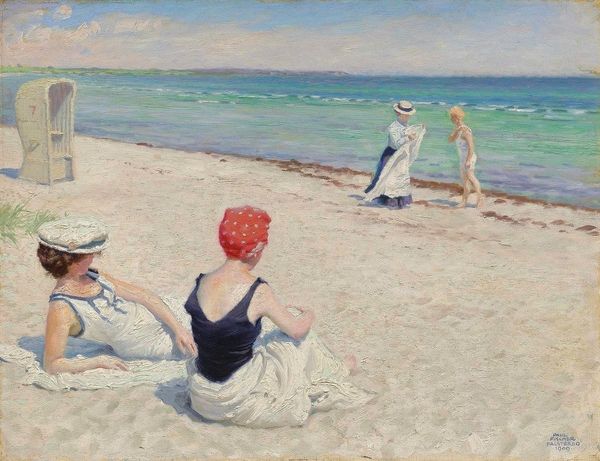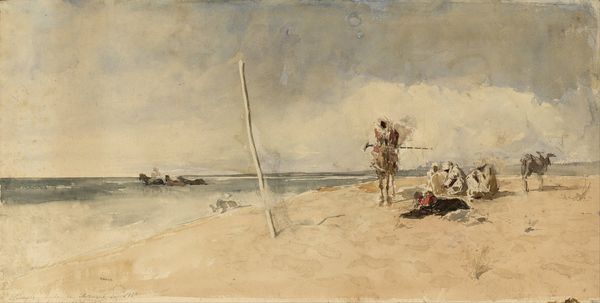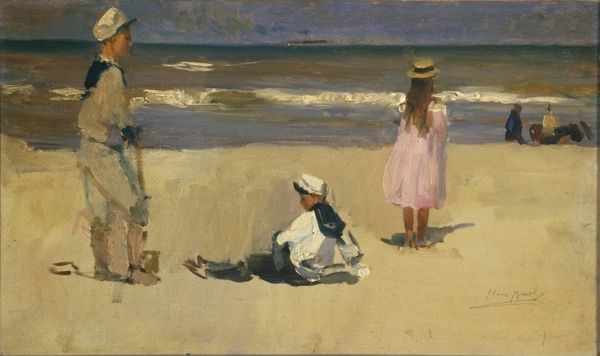
Dimensions: 67 x 115 cm
Copyright: Public domain
Curator: This is "Return from fishing" by Pasquale Celommi, painted in 1928. It's an oil on canvas, depicting a group of people on a beach. What are your first thoughts? Editor: Immediately, I'm struck by the tranquility, but also a certain...stillness, maybe even a melancholic calm? It's the hazy light, and the people seem to exist outside of a specific narrative, lost in their world. Curator: Absolutely, the artist really captures that moment of quiet observation. It makes me think about the cyclical nature of life, of hard work punctuated by moments of peace. Do you feel that comes through in this snapshot? Editor: I see a snapshot of gendered labour and social dynamics too. The men wrestling the catch from the boat and carrying brimming baskets contrast with the women grouped together watching. How complicit or knowing are they in this transaction, or do their voices also count here? Is their experience reflected, or merely framed, by Celommi? Curator: Hmm. I feel a real sense of shared existence in it. You see them all sort of coexisting around this idea of the catch – but maybe you are right and that the women stand somewhat separate to the rest. Perhaps they also do a lot more, and what is show does not encompass all of their daily routines. I wonder how Celommi perceived these hierarchies at the time? Editor: Well, Celommi often depicted everyday scenes of working-class life, infused with realism. These kinds of paintings were rarely apolitical; rather they reflected on an era dominated by inequalities along gender and class lines. I suppose I find myself searching for those tensions under what can seem like idyllic snapshots, though they don't always reveal themselves. Curator: And isn't that the real allure of art? It offers both a surface to appreciate and depths to explore! To come away feeling that the world contains the personal, social and more, not always laid bare, but if you lean in with thoughtful gaze and critical questions of perspective it's hard not to leave enriched. What about you? What remains with you here? Editor: The sheer fact of the subjects lives; acknowledging people on the periphery is no simple act. I leave wanting to know their story in a more considered light. What did it really mean to be in those figures lives? Perhaps it's something no painting can really relay, but is something that has meaning nonetheless.
Comments
No comments
Be the first to comment and join the conversation on the ultimate creative platform.
